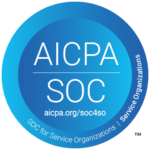Hospitals gain or lose millions of dollars each year on a single decision: whether a patient’s hospital stay should be classified as inpatient or observation status.
Getting that decision right safeguards margins, protects compliance, and maintains patient trust—getting it wrong jeopardizes all three.
The distinction between inpatient and observation affects multiple areas of hospital operations. While clinically it can influence the care pathway, including the level of monitoring and discharge plans, the primary driver is financial. This decision affects reimbursement rates, patient out-of-pocket costs, and the potential for audit scrutiny. Operationally, it also plays a key role in bed utilization, staffing requirements, and overall workflow efficiency.
In short, accurate status determination is not just a coding detail—it is a critical financial decision that directly impacts the hospital’s fiscal health and reimbursement outcomes.
EvidenceCare’s AdmissionCare software places that decision on solid footing by embedding real-time criteria into the EHR, giving clinicians the confidence to choose the correct status while capturing airtight documentation.
Understanding the Differences Between Inpatient and Observation Status
Before tackling revenue preservation, you need a clear grasp of what separates an inpatient stay from observation care. The distinction hinges on two pivotal factors: severity of illness and intensity of services.
An inpatient status is warranted when the patient’s condition is serious enough to require continuous monitoring, intensive services or complex treatment that cannot be provided safely in the outpatient setting. Think advanced heart failure or complicated pneumonia that will likely need more than two midnights of skilled intervention, frequent reassessment and potential escalation of care.
Observation status, by contrast, applies when the clinical team needs time—often, though not always, less than 48 hours—to monitor symptoms, run additional diagnostics, or determine if the patient will stabilize quickly. Common examples include chest pain that resolves with initial treatment or mild dehydration awaiting lab confirmation.
Central to these determinations is the CMS Two‐Midnight Rule. If you, as the admitting physician, reasonably expect the hospital stay to span at least two midnights, inpatient status is appropriate. If the anticipated length is shorter, observation status generally applies. Exceptions exist for certain inpatient‐only procedures and unexpected clinical deterioration, but the rule remains the backbone of Medicare compliance.
The decision carries weight far beyond a line item on a claim form. Consider the operational and compliance ripple effects:
-
- Observation patients are billed under Medicare Part B, leading to 20 percent coinsurance and no out‐of‐pocket cap, whereas inpatient stays fall under Part A with a single deductible.
- Bed management must account for possible conversion from observation status to hospital inpatient, that could impact throughput if a separate OBS unit or a bed is needed on the inpatient floor.
- Documentation should support the level of care based on clinical judgment and medical necessity—understanding that payers may reference proprietary tools such as InterQual or MCG, even if these are not uniformly applied (e.g., by Medicare).
- Condition Code 44 processes come into play when status corrections are needed before discharge, consuming case management time.
- Failure to issue the Medicare Outpatient Observation Notice (MOON) within required time frames risks penalties and patient dissatisfaction.
Because every status call echoes through reimbursement, compliance, and patient experience, accuracy is paramount. Now let’s talk about exactly how these classifications influence your financial performance and what missteps can cost your organization.
The Financial Implications of Inpatient vs Observation Status
Every time a patient is placed in observation status instead of being admitted as inpatient, the hospital’s revenue model shifts. Observation care is reimbursed at outpatient rates, which can be 30-50 percent lower than comparable inpatient payments. Meanwhile, patients face separate Part B copays for each service, often exceeding the single inpatient deductible—an unwelcome surprise that erodes satisfaction scores.
Misclassification amplifies the stakes. When a stay expected to span two midnights is billed as observation, the hospital leaves thousands of dollars on the table and exposes itself to length of stay penalties. Conversely, labeling a short, uncomplicated case as inpatient invites audits, payer denials, and clawbacks. A report by Change Healthcare revealed that 86% of claim denials are preventable, siphoning millions in write-offs and administrative expenses.
To prevent these financial risks, hospitals can adopt a multifaceted approach:
-
- Embed evidence-based criteria at the point of care with technology like EvidenceCare’s AdmissionCare, ensuring physicians see InterQual or MCG guidance before finalizing orders
- Conduct targeted staff training that clarifies the CMS Two-Midnight Rule, medical necessity triggers, and documentation best practices
- Establish real-time escalation pathways to physician advisors when status remains unclear, preventing retroactive changes that jeopardize reimbursement
- Track denial trends in an interactive dashboard, then loop insights back into process tweaks and payer negotiations
- Perform monthly audits of short inpatient stays and prolonged observation cases to catch systemic issues early and recover revenue
- Collaborate with finance and care management teams to model the margin impact of observation utilization and set organization-wide targets for improvement
When financial safeguards align with accurate status determination, the organization gains the latitude to focus on operational excellence.
Operational Strategies for Accurate Status Determination
Precision on paper starts with the people who touch every admission decision. Case managers and utilization review teams are most often tasked with monitoring medical necessity documentation, flagging mismatches between patient condition and ordered status. When complexity blurs the line between inpatient status and observation status, physician advisors serve as clinical arbitrators, applying severity-of-illness criteria and payer policies to guide the final call. Together, this protects compliance and shields revenue.
Yet people alone cannot keep pace with the volume of hospital admissions—and trying to fix documentation and status errors after admission or a denial is an inefficient process.
EvidenceCare’s AdmissionCare software integrates directly into major EHRs, surfacing bed status criteria guidance inside the admission workflow. Physicians see clear inpatient vs observation criteria before placing an order, while the platform auto-generates defensible medical necessity documentation in the background. The result is fewer status corrections, reduced case management queries, and a sharp drop in observation care denials.
Hospitals that pair technology with disciplined processes consistently outperform peers. Consider adopting these operational best practices:
-
- Standardize status assignment with evidence-based guidelines embedded in AdmissionCare so every clinician uses the same rulebook
- Schedule daily huddles between case management and bedside teams to review patients who approach the two-midnight threshold
- Conduct quarterly audits of short inpatient stays and long observation cases, then share findings at departmental meetings
- Empower utilization review nurses with real-time dashboards that flag potential payer risks and overdue MOON notices
- Maintain an escalation ladder that routes ambiguous cases to physician advisors within two hours, preventing costly retroactive changes
- Align KPIs across finance, UR, and bedside staff so observation inpatient ratios, denial rates, and average length of stay remain visible to leadership
When status determination is woven into workflow rather than bolted on as an afterthought, clinicians spend less time second-guessing orders and more time caring for patients.
The Clinical Impact of Accurate Patient Status Determination
When you classify a patient correctly at the start of a hospital stay, you create a clear roadmap for care delivery. Inpatient status unlocks a broader range of hospital services, multidisciplinary consults, and specialized interventions when severity of illness demands them. Observation care, on the other hand, focuses resources on targeted diagnostics and short-term monitoring, preventing unnecessary utilization, and keeping patients moving through the continuum of care.
Timely, compliant documentation underpins this clinical precision. When the admission note explicitly ties medical necessity to payer criteria, nursing teams know which protocols to follow, pharmacists anticipate medication needs, and discharge planners can arrange follow-up or skilled nursing facility placement without last-minute surprises. Documentation also protects continuity: if the patient’s condition worsens, the record already justifies escalation to inpatient status, preventing care gaps.
Consider the real-world impact of getting status right:
-
- A chest pain patient placed correctly in observation receives a dedicated protocol, serial troponins, and stress testing in under 24 hours, then safely discharges home without occupying an inpatient bed
- A frail elder with pneumonia admitted as inpatient meets the three-day requirement for skilled nursing coverage, avoiding rehospitalization that often follows premature discharge
- Accurate status assignment for heart failure reduces unnecessary IV diuretics in observation patients, lowering risk of renal injury and readmission
- Clear inpatient documentation for a complex diabetic foot infection prompts early infectious disease consultation, accelerating surgical decisions and shortening length of stay
These examples illustrate how clinical, financial, and operational priorities converge around one decision. The concluding section will show how hospitals can fortify that decision with the right tools and strategies.
Empowering Hospitals with the Right Tools and Strategies
Accurate inpatient versus observation status determination is more than a regulatory checkbox—it is the linchpin that aligns clinical excellence, operational efficiency, and financial sustainability. When you equip clinicians with evidence-based guidance at the point of care, denials fall, margins strengthen, and patients experience smoother journeys through the health system.
EvidenceCare’s AdmissionCare software was built to make that alignment effortless. By embedding payer criteria directly into the EHR workflow, AdmissionCare gives physicians instant clarity on status assignments, auto-generates compliant documentation, and frees case management teams to focus on high-value interventions. Hospitals using AdmissionCare report fewer status changes, reduced denial rates, and measurable improvements in both revenue and efficiency.
Want to read more about denial management best practices before seeing a demo of AdmissionCare?
Download our research report, “Cracking the Code on Denials,” and discover practical strategies to reduce observation denials and protect hospital margins.





